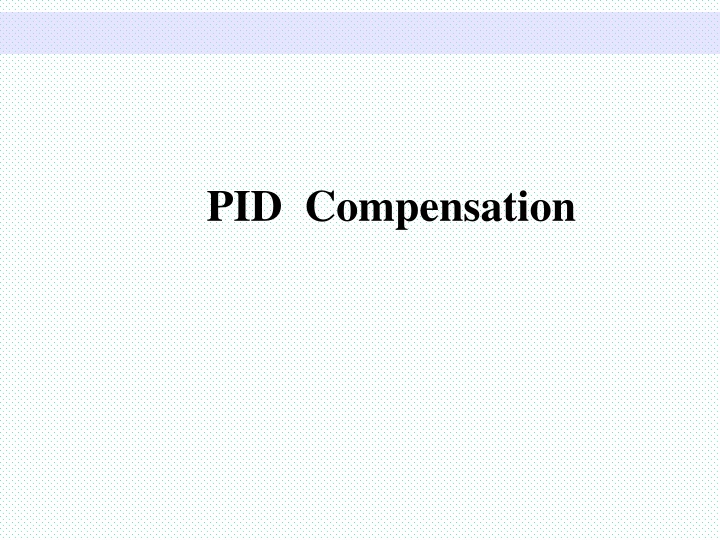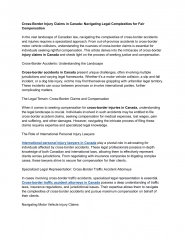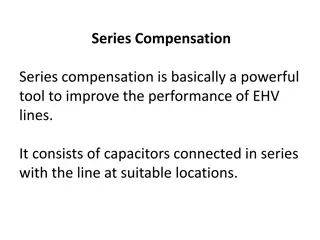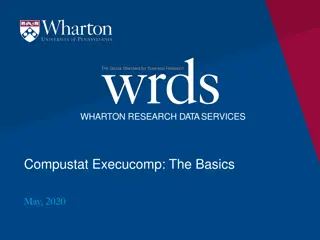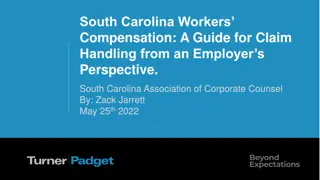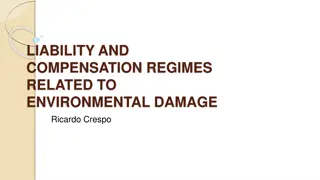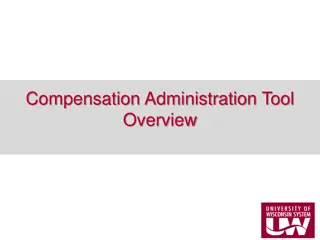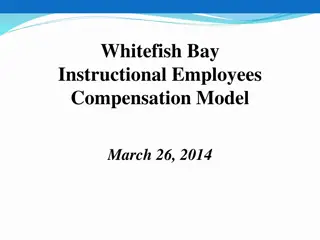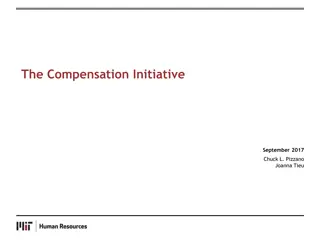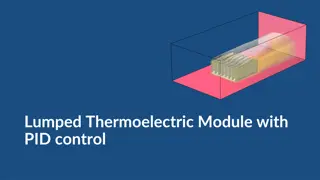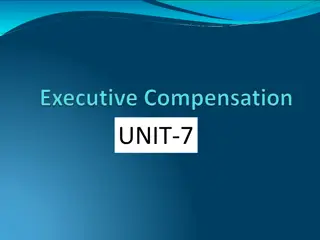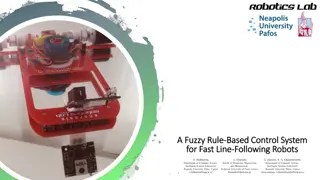PID Compensation
This content explains various feedback control methods like On-Off Control, Proportional Control, Proportional-Derivative Control, Proportional-Integral-Derivative Control, Characteristics of P, I, and D Controllers, and how they affect system response and error. It also discusses how combining different control methods can improve system performance and eliminate steady-state errors.
Download Presentation

Please find below an Image/Link to download the presentation.
The content on the website is provided AS IS for your information and personal use only. It may not be sold, licensed, or shared on other websites without obtaining consent from the author.If you encounter any issues during the download, it is possible that the publisher has removed the file from their server.
You are allowed to download the files provided on this website for personal or commercial use, subject to the condition that they are used lawfully. All files are the property of their respective owners.
The content on the website is provided AS IS for your information and personal use only. It may not be sold, licensed, or shared on other websites without obtaining consent from the author.
E N D
Presentation Transcript
Different Types of Feedback Control On-Off Control This is the simplest form of control.
Proportional Control A proportional controller attempts to perform better than the On-off type by applying power in proportion to the difference in temperature between the measured and the set-point. As the gain is increased the system responds faster to changes in set-point but becomes progressively underdamped and eventually unstable. The final temperature lies below the set-point for this system because some difference is required to keep the heater supplying power.
Proportional, Derivative Control The stability and overshoot problems that arise when a proportional controller is used at high gain can be mitigated by adding a term proportional to the time-derivative of the error signal. The value of the damping can be adjusted to achieve a critically damped response.
Proportional+Integral+Derivative Control Although PD control deals neatly with the overshoot and ringing problems associated with proportional control it does not cure the problem with the steady-state error. Fortunately it is possible to eliminate this while using relatively low gain by adding an integral term to the control function which becomes
The Characteristics of P, I, and D controllers A proportional controller (Kp) will have the effect of reducing the rise time and will reduce, but never eliminate, the steady-state error. An integral control (Ki) will have the effect of eliminating the steady-state error, but it may make the transient response worse. A derivative control (Kd) will have the effect of increasing the stability of the system, reducing the overshoot, and improving the transient response.
Proportional Control By only employing proportional control, a steady state error occurs. Proportional and Integral Control The response becomes more oscillatory and needs longer to settle, the error disappears. Proportional, Integral and Derivative Control All design specifications can be reached.
The Characteristics of P, I, and D controllers CL RESPONSE RISE TIME OVERSHOOT SETTLING TIME S-S ERROR Kp Decrease Increase Small Change Decrease Ki Decrease Increase Increase Eliminate Kd Small Change Decrease Decrease Small Change
Tips for Designing a PID Controller 1. Obtain an open-loop response and determine what needs to be improved 2. Add a proportional control to improve the rise time 3. Add a derivative control to improve the overshoot 4. Add an integral control to eliminate the steady-state error 5. Adjust each of Kp, Ki, and Kd until you obtain a desired overall response. Lastly, please keep in mind that you do not need to implement all three controllers (proportional, derivative, and integral) into a single system, if not necessary. For example, if a PI controller gives a good enough response (like the above example), then you don't need to implement derivative controller to the system. Keep the controller as simple as possible.
Open-Loop Control - Example 1 G s ( ) s2 + + 10s 20 num=1; den=[1 10 20]; step(num,den)
Proportional Control - Example The proportional controller (Kp) reduces the rise time, increases the overshoot, and reduces the steady-state error. Kp T s ( ) MATLAB Example s2 + 10 s + + ( 20 Kp ) Step Response From: U(1) 1.4 Kp=300; 1.2 Step Response From: U(1) 1 num=[Kp]; 1 0.9 Amplitude 0.8 0.8 den=[1 10 20+Kp]; To: Y(1) 0.7 0.6 t=0:0.01:2; 0.6 Amplitude To: Y(1) 0.4 0.5 K=100 K=300 step(num,den,t) 0.4 0.2 0.3 0 0 0.2 0.4 0.6 0.8 1 1.2 1.4 1.6 1.8 0.2 2 Time (sec.) 0.1 0 0 0.2 0.4 0.6 0.8 1 1.2 1.4 1.6 1.8 2 Time (sec.)
Proportional - Derivative - Example The derivative controller (Kd) reduces both the overshoot and the settling time. Kd s + Kp T s ( ) MATLAB Example s2 + + ) s + + ( 10 Kd ( 20 Kp ) Step Response From: U(1) 1.4 1.2 Kp=300; 1 Step Response From: U(1) 1 Kd=10; Amplitude 0.8 To: Y(1) 0.9 0.6 0.8 num=[Kd Kp]; 0.7 Kd=10 0.4 0.6 Amplitude den=[1 10+Kd 20+Kp]; To: Y(1) 0.2 0.5 0.4 0 t=0:0.01:2; 0 0.2 0.4 0.6 0.8 1 1.2 1.4 1.6 1.8 0.3 2 Time (sec.) Kd=20 0.2 step(num,den,t) 0.1 0 0 0.2 0.4 0.6 0.8 1 1.2 1.4 1.6 1.8 2 Time (sec.)
Proportional - Integral - Example The integral controller (Ki) decreases the rise time, increases both the overshoot and the settling time, and eliminates the steady-state error T s ( ) Kp s + Ki s3 10 s2 + + + ) s + ( 20 Kp Ki MATLAB Example Step Response From: U(1) 1.4 Kp=30; 1.2 Step Response From: U(1) 1.4 1 Ki=70; 1.2 Amplitude 0.8 To: Y(1) 1 num=[Kp Ki]; 0.6 Ki=70 Amplitude 0.8 0.4 To: Y(1) den=[1 10 20+Kp Ki]; 0.6 0.2 0.4 0 t=0:0.01:2; Ki=100 0 0.2 0.4 0.6 0.8 1 1.2 1.4 1.6 1.8 2 0.2 Time (sec.) step(num,den,t) 0 0 0.2 0.4 0.6 0.8 1 1.2 1.4 1.6 1.8 2 Time (sec.)
RLTOOL Syntax rltool rltool(sys) rltool(sys,comp)
Example - Practice Consider the following configuration:
Example - Practice The design a system for the following specifications: Zero steady state error Settling time within 5 seconds Rise time within 2 seconds Only some overshoot permitted
